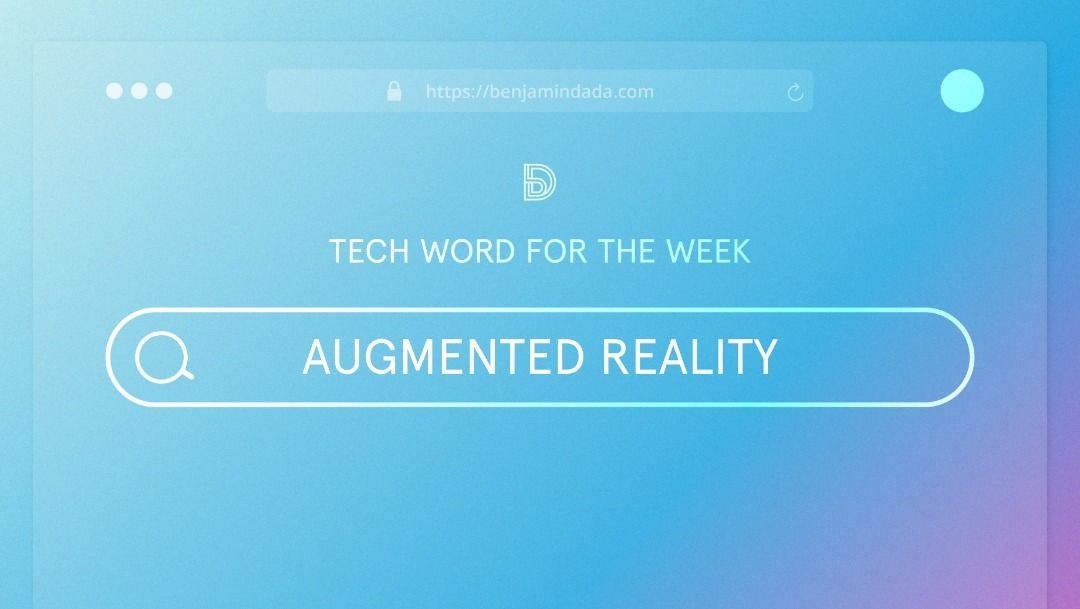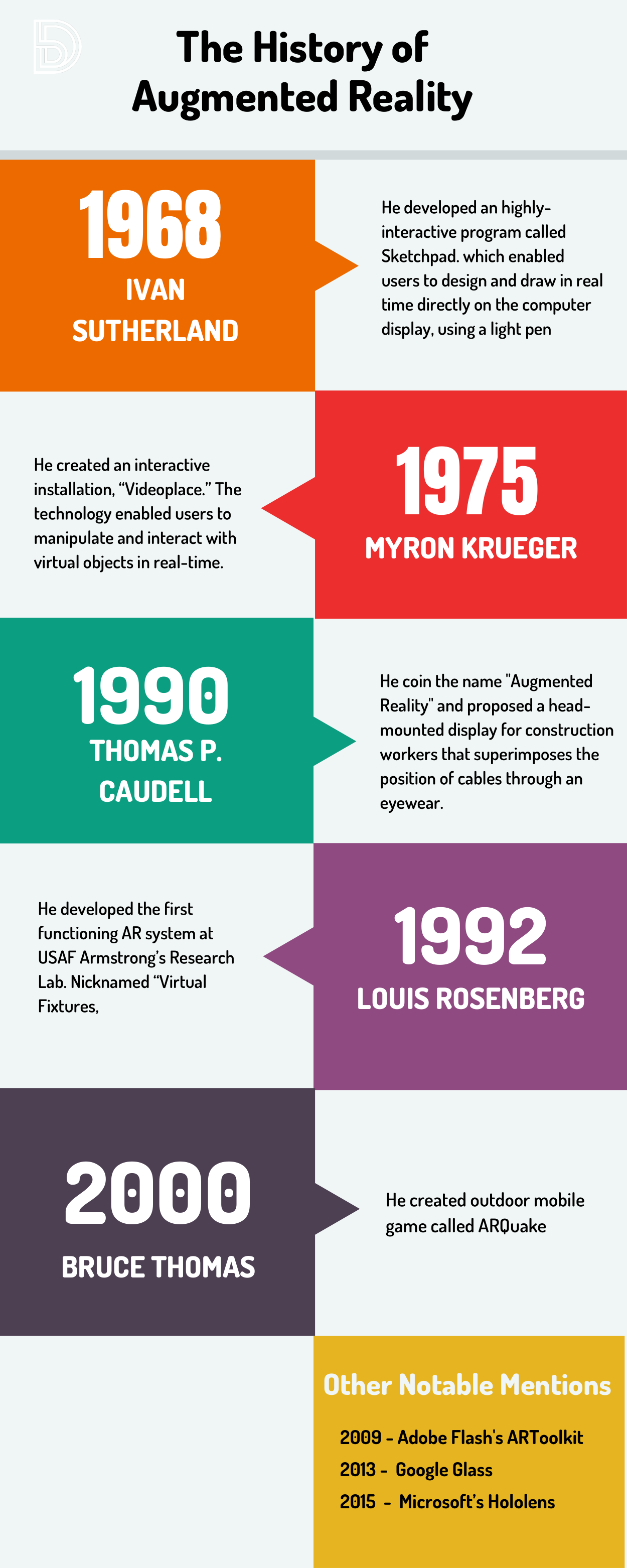Augmented Reality
AR bridges the gap between our imagination and the real world. It’s transforming the way we work, learn, play, shop, and connect with the world.

Tech Word For The Week is a weekly series where we look to explain commonly used words in the tech ecosystem in a simple, engaging way.
A day before the launch of iPhone X, Apple’s CEO Tim Cook asserted, "Augmented Reality (AR) is going to change everything." This statement might have been because there were over 1,000 apps with AR features on the App store, but the thing is AR might be a major contributor to the next phase of the internet — web 3.0.
AR bridges the gap between our imagination and the real world. It’s transforming the way we work, learn, play, shop, and connect with the world. As a matter of factly, it’s one of the underlying technologies of the Metaverse.
Definition and examples of augmented reality
Augmented Reality is an enhanced version of the real world achieved through digital visual elements, sound, or other sensory stimuli delivered via technology. It superimposes a computer-generated image on a user’s view of the world, thereby providing a mixed view of both a virtual and real world.
AR adds features to the real world which ordinarily won’t be there. For instance, you can set up a virtual building on a real piece of land where nothing has been built yet. Or while onboarding new recruits, you can use an AR device to digitally show them around the factory and how to use specific machines. Put simply, AR combines the physical and virtual worlds by overlaying digital visual elements, sound, images or other sensory stimuli, in your physical view.

Although they both get thrown around interchangeably alot, there’s a difference between AR, Virtual Reality (VR) and Mixed Reality (MR). While AR adds to the real world, VR gives you the impression that you are in another world. At the moment, VR requires a headset but AR can be accessed through a smartphone.
Meanwhile, Mixed Reality is a hybrid of both AR and VR. It is a blend of both physical and virtual worlds through the use of devices such as headsets, cameras, sensors, microphones, etc.
Practical examples of augmented reality include:
- Ambani Africa’s educational app
Ambani Africa is an edtech startup that uses augmented reality to make learning a language fun and experiential. They developed learner focused products that address a language learning deficiency. - Taeillo’s smartphone furniture showroom
Through Taeillo’s virtual furniture showroom, buyers can test out products from the comfort of their smartphone using AR. This allows buyers to explore different parts of our products before making a final decision. - Snapchat’s lenses
Snapchat’s AR lenses overlay art on a user taking a selfie, or distort the live image in many different ways. - Google lens
Google lenses allow users to search with their phone's camera. All they have to do is point their camera at any object and Google will tell you what it is. For instance, point your camera at a book, and you get information on the author and see reviews.
History of augmented reality
Augmented Reality dates back to 1968, when Ivan Sutherland developed his highly-interactive program Sketchpad. It enabled users to design and draw in real time directly on the computer display, using a light pen. Myron Krueger also contributed to AR in 1975 with his interactive installation, “Videoplace.” The technology enabled users to manipulate and interact with virtual objects in real-time.
The phrase, “augmented reality, was coined by Thomas P. Caudell in 1990 as an employee at Boeing Computer Services Research. In replacement of Boeing’s system of large plywood boards with wiring instructions for every aircraft being built, he proposed a head-mounted display for construction workers that superimposes the position of cables through an eyewear. This eyewear projected a custom wiring instruction onto users through a multipurpose and reusable board instead of having to use different boards for each aircraft.
In 1992, Louis Rosenberg developed the first functioning AR system at USAF Armstrong’s Research Lab. Nicknamed “Virtual Fixtures,” the technology enabled an overlay of sensory information on a workspace to improve human productivity. Other notable breakthroughs in AR include: Bruce Thomas outdoor mobile game called ARQuake in 2000, Adobe Flash design tool called ARToolkit in 2009, Google Glass by Google in 2013, and Microsoft’s AR headset called Hololens in 2015.

How AR is transforming the world
Here are some of the ways augmented reality is transforming humans and businesses:
1. Enhances collaboration
AR is accelerating the adoption of remote work by saving workers a lot of time and money. For instance, through Microsoft HoloLens technology, team members in remote locations can project 3D engineering models as holograms in their offices, then work together to make decisions or point out potential problems.
2. Minimise workplace error
The onboarding process in organisations is made easier with Augmented Reality. It is being used to onboard new recruits and guide them till the quality of their work improves.
At Volkswagen Zwickau plant, an augmented reality system helps new recruits to navigate massive factories for maintenance, inventory, and inspections by overlaying the information they need for the task on the spot.
3. Close the skill gap
Typically, if a new recruit is doing something unfamiliar, they might have to follow an instruction manual all through the process. This means the work will stop-start. With AR things can be different. Instructions can be overlaid on the AR headset directly in the employee’s view thus freeing his hand to focus on getting the job done.
Amazon is working with Vuzix, a virtual headset maker, to create a tool that captures, analyses, and delivers real-time actionable data directly to workers on job sites. This helps employees to navigate warehouses, manage inventory, or offer remote assistance on a construction site or plant floor.
4. Motivate people to improve their health lifestyle
Augmented Reality might be the answer for patient education in ophthalmology — diagnosis and treatment of eye disorders — . With apps like Oculenz, doctors can show the simulation of a patient’s condition. When the patient sees the long-term effects of their lifestyle on their eyes, it could motivate them to make changes.
Key Takeaways
- The possibilities of Augmented Reality are boundless. The only uncertainty is how smoothly, and quickly, developers will integrate these capabilities into devices that people use on a daily basis.
- Augmented Reality is an enhanced version of the real world achieved through digital visual elements, sound, or other sensory stimuli delivered via technology.
- It combines the physical and virtual worlds by overlaying digital images in your physical view.







Comments ()